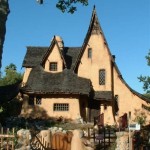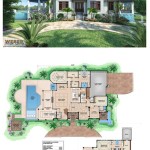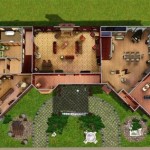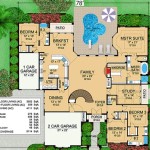Decoding the Brady Bunch House: Interior Floor Plans and Design Insights
The Brady Bunch house, a quintessential symbol of 1970s American suburban life, continues to resonate with audiences decades after the show's initial run. While the exterior, located in Studio City, California, is instantly recognizable, the interior layout as portrayed on television presents a more nuanced and often debated subject. The show's soundstage set created a fictionalized space that prioritized visual appeal and the needs of storytelling over strict architectural accuracy. Understanding the interior floor plans, as depicted on screen and often reimagined by fans, provides a fascinating glimpse into the design ethos and cultural values of the era, as well as the practical considerations of television production.
Attempts to reconstruct accurate Brady Bunch house floor plans face several challenges. The most significant hurdle lies in the inherent artificiality of a television set. Walls could be moved or eliminated entirely to accommodate camera angles, lighting equipment, and the movement of actors. Furthermore, the show rarely presented a complete picture of the entire house. Certain rooms, such as Mr. Brady's den or specific bedroom configurations, saw more screen time than others, leaving gaps in our understanding of the overall spatial arrangement. Despite these challenges, analyzing the available visual information allows for a reasonable approximation of the floor plans.
The Brady Bunch house, in the context of the show, is generally perceived as a two-story, four-bedroom residence designed to comfortably accommodate a blended family of eight. The ground floor is prominently featured with the living room, dining room, kitchen, and a den, while the upper floor houses the bedrooms and bathrooms. The iconic staircase serves as a pivotal point, often used for character entrances and exits, emphasizing the connection between the two levels. The following sections will delve into specific areas of the house, exploring their likely layout and design features.
Analyzing the Ground Floor: Living Room, Dining Room, and Kitchen
The living room is arguably the most recognizable space in the Brady Bunch house. Characterized by its avocado green carpet (a hallmark of 1970s design), orange sofa, and a prominent rock fireplace, it served as the central gathering space for the family. The floor plan suggests a rectangular room extending along the front of the house. The large picture window offered views of the (often artificial) front yard. The fireplace, located on one of the longer walls, acted as a focal point, flanked by bookshelves and decorative items. The open design allowed for easy access to the dining room. The placement of furniture, while seemingly casual, was carefully arranged to facilitate conversations and allow for unobstructed camera angles.
The dining room, situated adjacent to the living room, maintained the same warm color palette. A large, rectangular dining table provided ample seating for the family. A notable feature was the china cabinet, displaying a collection of decorative plates and serving pieces. The open flow between the living and dining rooms reinforces the sense of a shared space designed for family interaction. This layout aligns with the increasingly popular open-plan designs of suburban homes during the 1970s, emphasizing informality and connectivity between different areas of the house.
The kitchen, though less frequently featured than the living room, presented a functional and well-equipped space. The floor plan suggests a galley-style layout. This linear arrangement featured cabinets and appliances along two parallel walls, maximizing efficiency in a relatively compact space. Appliances, such as the refrigerator and oven, were likely situated on one side, while the sink and countertop workspace occupied the other. The color scheme featured a combination of bright yellow and wood tones, reflecting the optimistic and cheerful aesthetic of the era. A breakfast table provided a casual dining area for smaller family gatherings or quick meals. The kitchen's location typically implied that it was situated towards the back of the house, possibly with access to a backyard or service area.
Exploring the Upper Floor: Bedrooms and Bathrooms
The second floor of the Brady Bunch house primarily consisted of the bedrooms and bathrooms, designed to accommodate the six Brady children. The most iconic bedroom configuration was the shared rooms for the boys and girls. The boys, Greg, Peter, and Bobby, occupied one room characterized by a shared bunk bed and a cohesive decor. The girls, Marcia, Jan, and Cindy, shared a similarly designed bedroom across the hallway. The floor plan suggests that these rooms were located above the living and dining rooms, maintaining a rectangular shape to match the dimensions of the space below.
The bedroom design emphasized functionality and shared living. Bunk beds maximized floor space, allowing for individual storage and study areas. The decor reflected the personalities of the occupants, but also maintained a unified aesthetic. The boys' room often featured sports-themed decorations, while the girls' room showcased a more feminine and floral-inspired style. The shared bathrooms, though less frequently depicted, were likely located between the bedrooms, providing convenient access for all the children. The design would have incorporated practical features, such as multiple sinks and ample storage, to accommodate the needs of a large family.
Mr. and Mrs. Brady's master bedroom, presumably located at the end of the hallway, offered a more private and spacious retreat. The layout suggests a rectangular room with ample space for a king-sized bed, dressers, and possibly a sitting area. The decor reflected a more sophisticated and mature style, with warmer colors and more refined furnishings. The master bedroom would have included an en-suite bathroom, providing privacy and convenience for the adults. The location of the master bedroom, situated at the opposite end of the hallway from the children's rooms, reinforces the sense of separation between the parental space and the children's shared living areas.
Deconstructing the Design Elements: Style and Functionality
The interior design of the Brady Bunch house is deeply rooted in the aesthetic trends of the 1970s. The prevalence of avocado green, burnt orange, and wood paneling reflects the dominant color palettes and material choices of the era. The furniture, characterized by its clean lines and comfortable upholstery, epitomizes the mid-century modern style that remained popular during this period. The overall design aimed to create a warm, inviting, and functional space that reflected the values of a modern American family.
Functionality played a key role in the design choices. The open-plan layout of the ground floor facilitated family interaction and created a sense of spaciousness. The shared bedrooms for the children maximized floor space and encouraged a sense of community. The placement of furniture and appliances was carefully considered to optimize usability and efficiency. The design prioritized practical solutions for a large family, while also maintaining a visually appealing and aesthetically cohesive environment.
The iconic staircase, often serving as a central point of action, deserves specific attention. Its design, featuring wooden railings and a simple balustrade, contributed to the overall aesthetic appeal of the house. The staircase's location, connecting the ground floor and the upper floor, reinforces the sense of a unified living space. The camera angles frequently utilized the staircase to create dynamic shots and emphasize character movements, highlighting its importance in the overall visual composition of the show. The staircase's presence served not only a functional purpose but also a narrative one, contributing to the storytelling and visual appeal of the Brady Bunch house.
The Brady Bunch house, while a fictional creation, provides a valuable case study in television set design and the cultural values it reflects. The interior floor plans, as approximated through visual analysis, reveal a carefully planned space designed to accommodate a large family and facilitate the needs of television production. The design elements, deeply rooted in the aesthetic trends of the 1970s, contribute to the house's iconic status and its enduring appeal as a symbol of American suburban life. Understanding the design choices and spatial arrangements of the Brady Bunch house offers a fascinating glimpse into the cultural landscape of the era and the enduring power of television to shape our perceptions of home and family.

Brady Bunch House Floor Plans

The Brady Bunch House Through Years

The Brady Bunch House Through Years

140 Tv Floor Plans Ideas How To Plan House

Brady Bunch Layout House Floor Plan Poster

Brady Bunch Layout House Floor Plan 2nd

Pin By Holland Mcrae On Inside The Real Brady Bunch House After Completed Renovation Flooring Floor Plans Under Construction

Brady Bunch Main Floor Cg Tour

Brady Bunch House Tv Floor Plan 2nd Blueprint For Home Of And Mike Architecture Art Gift Him

Brady Bunch House Free Design 3d Floor Plans By Planner 5d








